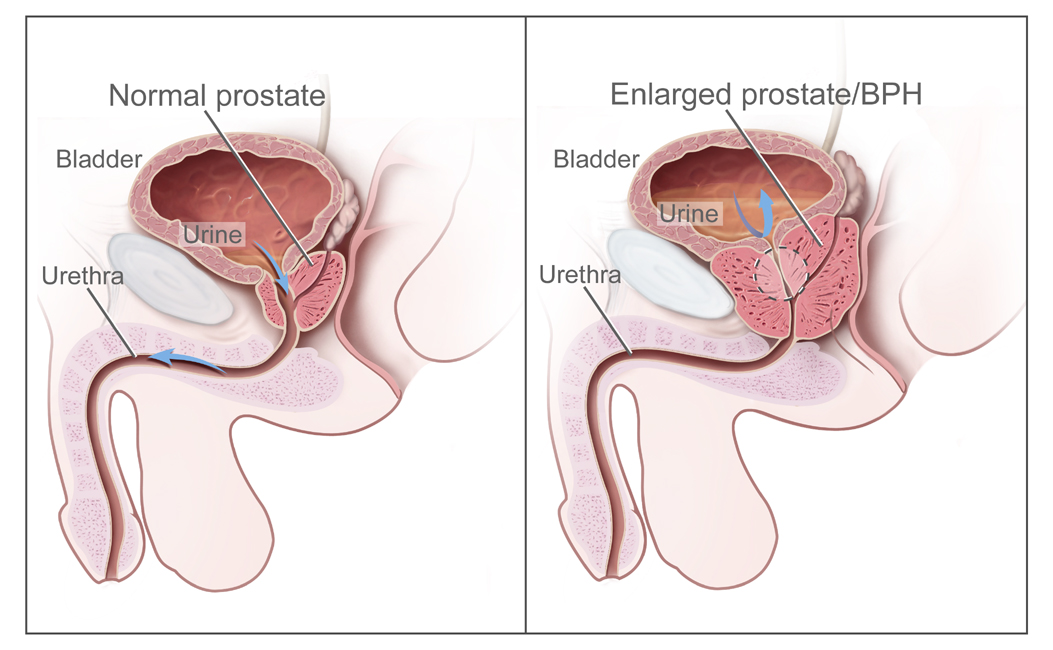Benign Prostatic Hyperplasia
Benign prostatic hyperplasia (BPH), also known as benign prostatic hypertrophy, is an enlargement of the prostate gland. Typically, middle-aged and older men (>50 years) are affected. The enlarged prostate compresses the urethra, resulting in difficulty initiating and maintaining urination, a decrease in urine flow rate, incomplete bladder emptying, and an increase in urination frequency. Microscopically, the number of prostatic cells has increased (hyperplasia).

Image retrieved from Wikipedia on 28 June 2023. This image is a work of the National Institutes of Health, part of the United States Department of Health and Human Services, taken or made as part of an employee’s official duties. As a work of the U.S. federal government, the image is in the public domain. Image’s Page
Symptoms
BPH is typically progressive and leads to urethral obstruction, which can cause a decrease in urine flow rate, increased frequency of urination, nocturia (nighttime urination), dysuria (painful urination), and urinary tract infections.
Examination
The examination is performed digitally through the rectum (digital rectal examination). The prostate gland is felt on the anterior wall of the rectum; it has a rubbery consistency. However, the degree of enlargement may not be proportional to the degree of urinary obstruction. Some men have enlarged prostates, but they do not have urethral compression.
Diagnosis
The diagnosis of BPH can only be made after a biopsy or resection; otherwise, the initial diagnosis is benign prostate enlargement.
Uroflowmetry is most effective when performed on a patient with a full bladder. Urine is collected in a container while the patient urinates, and the urine flow rate is measured. Men between the ages of 46 and 65 should have a flow rate of at least 21 mL/s and a flow rate of over 200 mL. In BPH, the urine flow rate decreases.
PSA (prostate-specific antigen): PSA levels should be less than 4 ng/mL. Mild elevations in PSA may be seen in BPH. PSA is a tumor marker for prostate cancer.
Treatment
Treatment options include medication, localized heat therapy, balloon dilation, laser vaporization, and microwave hyperthermia. Sometimes, surgical resection of the enlarged prostate is required.
« Return to Dictionary